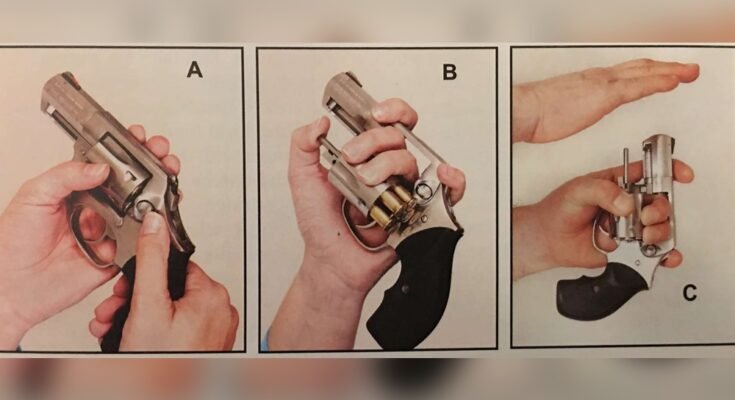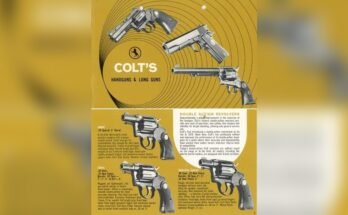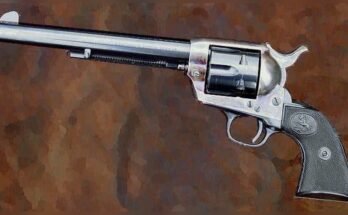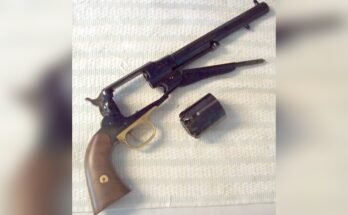Handling a single-action revolver safely starts with knowing how to unload it properly. If you’ve ever wondered about the right steps to clear your revolver, you’re in the right place.
Unloading might seem simple, but doing it the wrong way can put you and others at risk. This guide will walk you through the process clearly and confidently, so you can handle your revolver with the care it deserves. Keep reading to master this essential skill and boost your safety every time you handle your firearm.
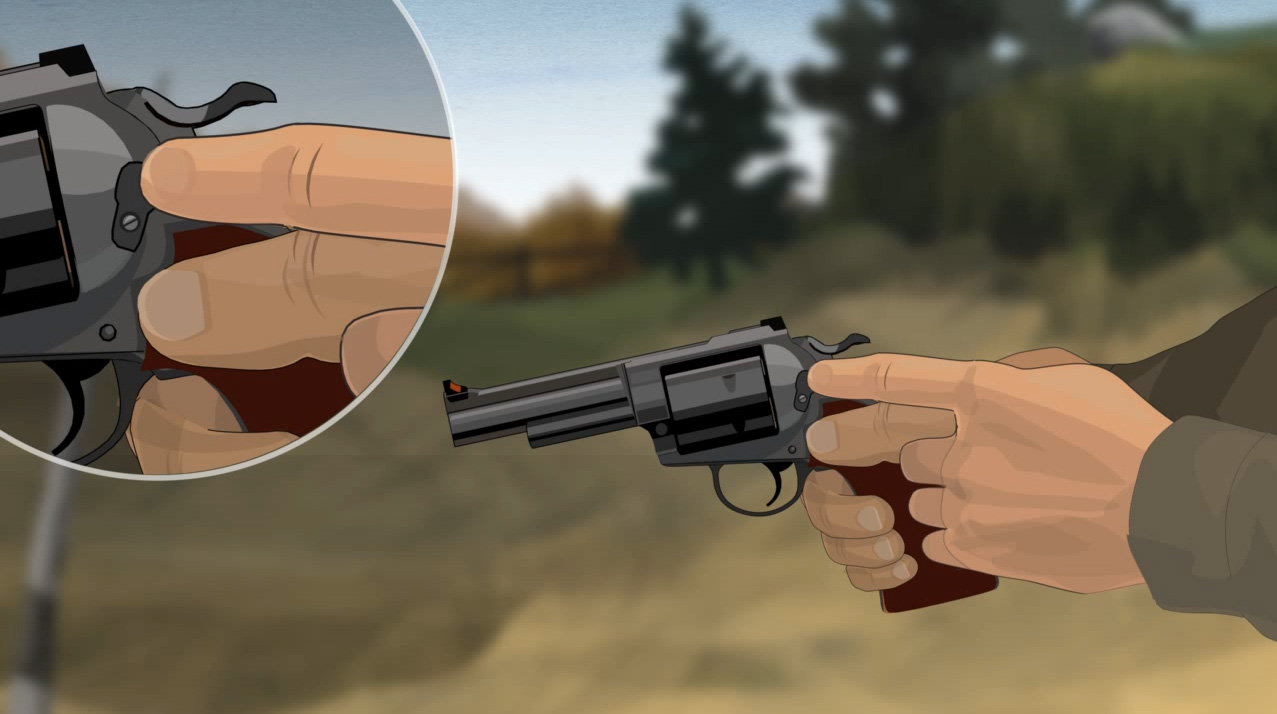
Safety First
Safety comes first when unloading a single-action revolver. Handling a firearm needs full attention. Careless actions can cause accidents. Taking the right steps protects you and others nearby.
Clear Your Surroundings
Check the area around you before unloading. Make sure no one stands near the muzzle. Remove any objects that could get in the way. Choose a safe place with a solid backstop. This reduces the risk of injury or damage.
Wear Protective Gear
Always wear eye protection to guard against flying debris. Hearing protection is important to protect your ears. Guns can be loud even when unloaded. Gloves can help keep a steady grip. These items keep you safe during the entire process.

Check The Cylinder
Checking the cylinder is a key step in unloading a single-action revolver. This part holds the cartridges and rotates as you fire. You must see and access the cylinder to remove all rounds safely. Different revolvers have different ways to open the cylinder. Learn how to open it carefully. This helps avoid accidental firing and keeps you safe.
Open The Loading Gate
Most single-action revolvers have a loading gate on the side. Slide it open gently to expose the chambers one by one. Look inside to check if any cartridges remain. You can then push out each round using the ejector rod. Take your time to inspect every chamber. This method is common on older or classic models.
Swing Out Or Remove The Cylinder
Some newer single-action revolvers have a cylinder that swings out. Press the release latch to unlock it. Swing the cylinder out to the side for easy access. You can see all chambers at once. In rare cases, the cylinder can be removed entirely. This allows quick unloading of all cartridges. Always handle the cylinder carefully to avoid damage.
Eject The Cartridges
After opening the cylinder of a single-action revolver, the next step is to eject the cartridges. This process removes the spent or live cartridges from the chambers. It ensures the gun is safe and ready for cleaning or storage.
Proper ejection helps prevent jams and keeps the firearm in good condition. Careful handling during this step is important for safety and efficiency.
Use The Ejector Rod
The ejector rod is a small metal rod located under the barrel. Push it gently to push out the cartridges from the cylinder chambers. Apply steady pressure; cartridges will slide out easily. Avoid forcing the rod too hard to prevent damage to the revolver.
Hold the revolver firmly with one hand. Use the other hand to push the ejector rod fully. Check that all cartridges start to move out from the chambers.
Inspect Each Chamber
After ejecting, look inside each chamber carefully. Make sure every cartridge is removed. Sometimes a cartridge may stick or not fully eject. Use the ejector rod again if needed.
Check for dirt or debris inside the chambers. Clean any buildup before loading or storing the revolver. This step keeps the gun working smoothly and safely.
Verify The Revolver Is Empty
Before handling a single-action revolver, always verify it is empty. Safety depends on this step. Never assume the chambers are clear without checking. This careful approach prevents accidents and ensures safe use.
Take your time and focus on this task. Properly verifying the revolver protects you and those around you. Follow these steps to confirm the firearm is empty.
Visually Inspect The Chambers
Open the loading gate on the revolver’s side. Tilt the revolver to see inside each chamber. Look closely for any cartridges or casings. Bright light can help reveal hidden rounds. A clear view means no bullets remain. Do not skip this critical step.
Perform A Manual Check
After visual inspection, use your finger or a tool. Gently feel inside each chamber. Confirm no cartridges are present by touch. This double check adds safety. It ensures you did not miss any rounds. Always treat the firearm with respect and caution.
Close The Revolver
Closing the revolver properly is an important step after unloading. This ensures the firearm is safe and ready for storage or transport. Always handle the revolver carefully to avoid damage or accidents. Follow these simple steps to close your single-action revolver correctly.
Swing The Cylinder Back
Gently swing the cylinder back into place. The cylinder should align perfectly with the barrel. Do not force it if it feels stuck. Make sure all chambers are empty before closing. This step keeps the revolver secure and ready for use.
Secure The Loading Gate
Close the loading gate firmly but gently. The gate locks the cylinder in place. Check that it clicks shut to confirm it is secure. A loose gate can cause misfires or damage. Always double-check this step for safety and proper function.

Store The Revolver Safely
Storing a single-action revolver safely is as important as unloading it correctly. Proper storage keeps the firearm secure and prevents accidents. It also protects the revolver from damage over time. Follow clear steps to ensure safe storage.
Choose A Safe Location
Select a spot that is out of reach of children and unauthorized people. A locked cabinet or safe works best. Avoid places with heavy traffic or where the gun could easily fall. The location should be easy for you to access but hard for others.
Maintain Proper Storage Conditions
Keep the revolver in a dry place to stop rust and corrosion. Use a gun sock or case to protect it from dust and moisture. Avoid storing it in extreme heat or cold. Regularly check the revolver and clean it to keep it in good shape.
Frequently Asked Questions
How Do You Safely Unload A Single-action Revolver?
To unload safely, first engage the hammer half-cock position. Open the loading gate and manually eject each cartridge one by one. Always point the revolver in a safe direction during this process to prevent accidents.
What Is The Half-cock Position On A Revolver?
The half-cock position is a safety notch on the hammer. It allows the cylinder to rotate freely for loading or unloading. This position prevents the hammer from striking a cartridge accidentally.
Can You Unload A Single-action Revolver With A Full Cylinder?
No, you must open the loading gate and rotate the cylinder. Remove each cartridge individually. The cylinder cannot be removed or unloaded all at once like some modern revolvers.
Why Is Pointing The Revolver Safely Important When Unloading?
Pointing the revolver safely reduces the risk of injury if an accidental discharge occurs. Always keep the muzzle pointed in a safe direction during unloading and handling.
Conclusion
Unloading a single-action revolver is simple and safe. Always point the gun in a safe direction first. Open the loading gate and push the ejector rod to remove each cartridge. Take your time and check each chamber. This careful process keeps you and others safe.
Practice these steps often to build confidence. Handling your revolver with care shows respect for the firearm. Safety always comes first.
